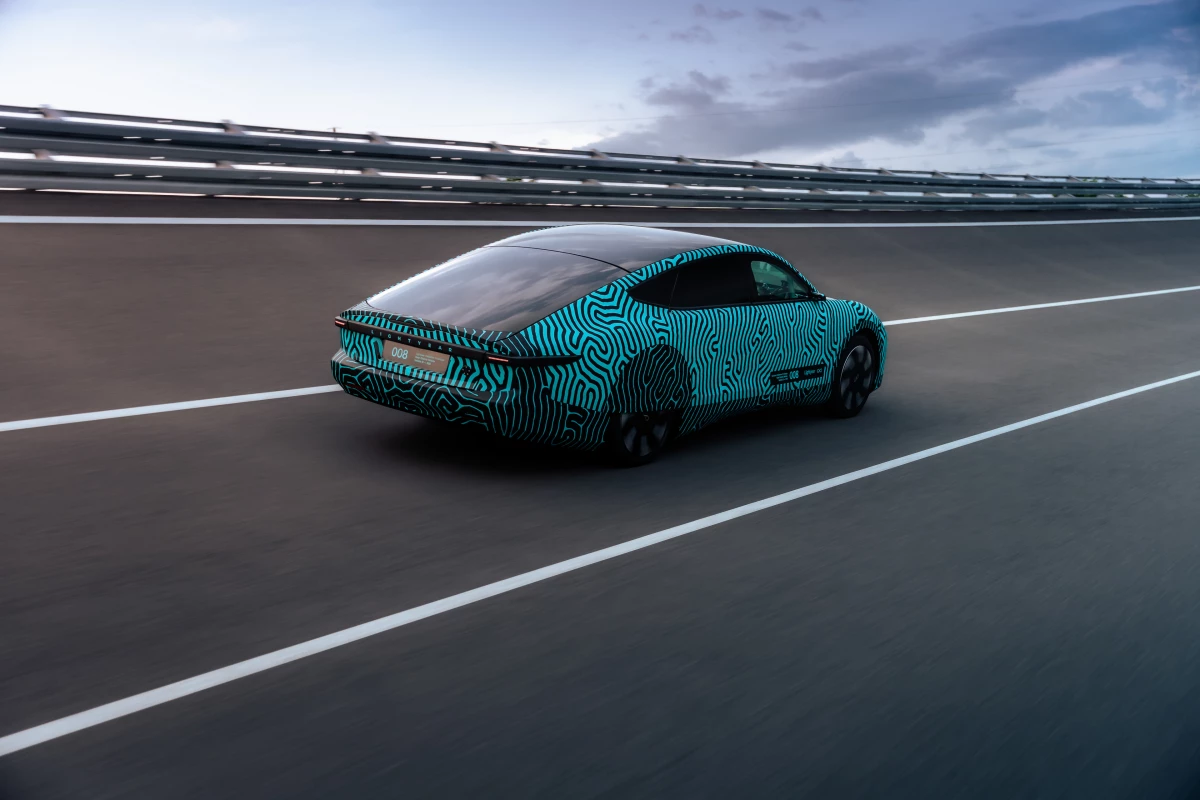Last year, Netherlands solar electric vehicle developer Lightyear took its validation prototype to the track and managed to roll for 710 km on a single charge of its 60-kWh battery. That milestone was achieved at 85 km/h, but more recently the company has undertaken some high-speed testing at a track near Rome.
Back in April 2021, Bridgestone announced that it had engineered tires with low rolling resistance specifically for the Lightyear One solar electric vehicle.
Late last month, the Lightyear team made its way to the Bridgestone Technology & Solutions Centre EMIA in Aprilia, near Rome, to undertake more efficiency testing, and perform aerodynamic evaluations. And as part of this process, the test drivers decided to push the long-range vehicle even further by undertaking high-speed runs.
Though the company is aiming for a top speed of 160 km/h (99.4 mph), test drivers are raising the One's tested speed in stages to make sure all works as it should and safety boxes are checked. As such, the latest outing topped out at 130 km/h (80 mph) with local temperatures around 10 °C (50 °F) and overcast conditions – both of which impact efficiency and performance.
Nevertheless, Lightyear reports that the One validation prototype managed to achieve a 141 Wh/km energy consumption figure, which should translate to more than 400 km (248.5 miles) of driving range on a single charge. Info on how much contribution the panels made during these tests hasn't been shared, but test driver Megan Parfitt said "comparing that to other vehicles on the market right now, that's about one and a half times further than a directly-comparable vehicle can do with the same battery size."
Lightyear is aiming for a WLTP per-charge range of 725 km (450 miles) for the production vehicle, with the five square meters of solar panels potentially keeping the One away from chargers for longer. The first vehicles are expected to start rolling off the production line later this year.
Source: Lightyear




